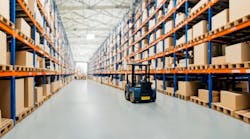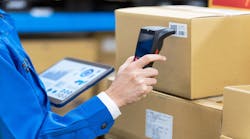“We hardly thought about supply security before the pandemic…everything was in its place,” Chirag Patel, president and co-CEO of Amneal Pharmaceuticals, said during an opening roundtable discussion during AAM’s Access! Annual Meeting this May. “[It] all became a nightmare last April or May. Thankfully we survived. And again, it’s becoming a challenge now with India going through such a dire situation…If unfortunately the current situation in India goes longer, we will have issues in the supply chain.”
For nearly 90 minutes, various experts from across pharma’s generics space weighed in on the state of the global supply chain and what it’s going to take to alleviate disruption concerns during the virtual conference held by the Association for Accessible Medicines. Although the generics industry has survived most of the pandemic with few supply issues, surging cases of COVID-19 in various countries are keeping tensions high. Even if pharma makes it through this next wave of the pandemic without falling short of making critical deliveries, an acknowledgement of the supply chain’s vulnerability has settled over the industry.
“When we look at antibiotics…90% of API and about 80% of finished products are made outside of the U.S.,” Patel continued. “Do we not want to have at least 30-40% capacity in the U.S. in case anything happens? Climate change? War? Trade [issues]?”
So, what can or should be done to bring more manufacturing back to the U.S.? One sentiment echoed throughout the group’s disccusion is that public/private partnerships will be vital.
“This is not something that the U.S. government can wholesale afford to run. This is not something industry can do by themselves,” said Ian Watson, deputy assistant secretary, Office of Strategy, Policy, Planning and Requirements, U.S. Department of Health and Human Services. “This is truly [something] public/private partnerships, along with our partners overseas, have to address because of the complexities involved.”
Despite bipartisan support for reshoring more generics manufacturing, the industry has struggled with finding ways to make it financially feasible. When asked about the best way to incentivize more U.S. generics manufacturing, Watson pointed to various strategies currently used by the Biden administration and regulators.
“If we’re taking steps to commercialize…and integrate continuous manufacturing tech for pharma production for the U.S. specifically... That enables rapid, on-demand, fully automated production of medicines in small footprint facilities….from API to final formulations without interruptions. Platform technologies and how the U.S. government does the capital investments upfront and working with industry partners to identify those is critical,” Watson said.
In addition to supporting companies using advanced manufacturing technologies, Watson said that it’s critical for the FDA to rapidly review platform technologies so that they can be easily adopted.
However, Vinita Gupta, CEO of Lupin Limited, pointed out that there are still formidable cost restraints associated with generics manufacturing in the U.S.
“Without the aid of policy, for most oral solid products, U.S.-based manufacturing is quite a challenge,” she said. “There’s a tremendous amount of pricing pressure. I think the idea of bringing lasting manufacturing into the U.S. would require long-term guaranteed price of volume contracts to warrant taking on the risk of investment…to manufacture in the U.S.”
Gupta noted that the cost issues are still at play even with the use of advanced manufacturing technologies.
“We have done a lot of work on continuous manufacturing and we are actually piloting it in the organization right now,” she said. “When we look at the cost of continuous within the U.S. and India…the U.S. is still double that of India. Unless we can find a way to [bring that down], it’s going to be difficult to make a business case.”
In many ways, the group’s discussion highlighted that when it comes to reshoring, there are still more questions than answers. For example, Gupta wondered how the government would regulate the environmental impact of API and KSM manufacturing.
“If I look at API manufacturing as well as KSMs…that business is a business of scale,” she said. “You have to have global volumes for an API facility to be efficient. Cost of manufacturing, the labor component is high…and there is the environmental piece. Bringing it back to the U.S., we would have to answer those questions and determine how to do it effectively.”






